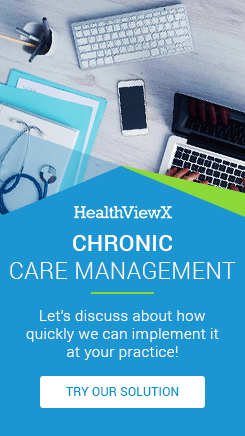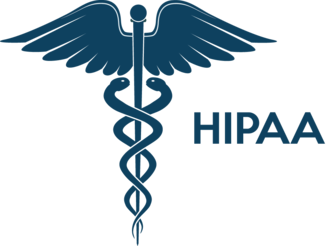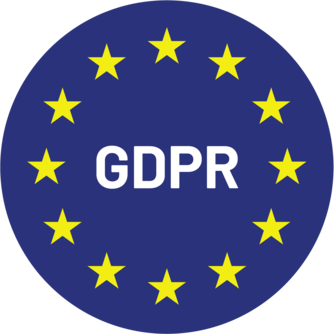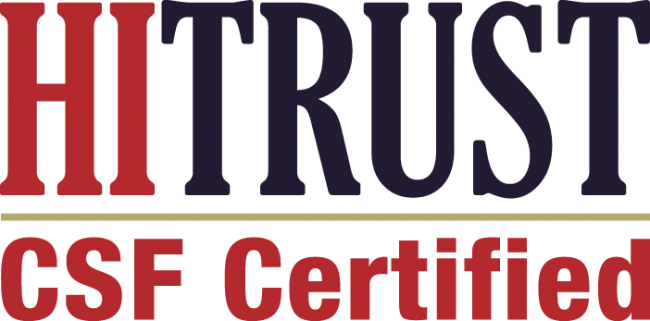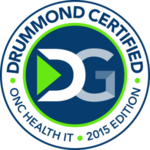The American healthcare landscape is experiencing a profound transformation, driven by an aging population, rising chronic disease prevalence, and an urgent need for cost-effective care delivery models. Remote Physiologic Monitoring (RPM) has emerged as a critical component in this evolution, offering health systems a pathway to improve patient outcomes while managing costs. With Medicare’s expanded coverage and reimbursement for RPM services, healthcare organizations now have a unique opportunity to integrate these technologies into their strategic frameworks.
The Current State of US Healthcare: By the Numbers
The statistics paint a compelling picture of why RPM integration is no longer optional but essential:
Chronic Disease Burden:
- Approximately 60% of American adults live with at least one chronic condition, while 40% have two or more chronic diseases
- Chronic conditions account for 90% of the nation’s $4.1 trillion annual healthcare expenditure
- Heart disease alone affects 655,000 Americans annually and costs the US healthcare system $219 billion per year
- Diabetes impacts 37.3 million Americans (11.3% of the population) and incurs direct medical costs exceeding $237 billion annually
Healthcare Access and Utilization:
- Rural Americans face significant healthcare access challenges, with 80% of rural areas designated as Health Professional Shortage Areas
- Emergency department visits cost an average of $2,168 per visit, while preventable hospitalizations cost Medicare approximately $15 billion annually
- The average length of stay for Medicare beneficiaries is 4.6 days, costing an average of $15,734 per admission
Medicare Demographics:
- Medicare serves 65.0 million beneficiaries, with this number projected to reach 80 million by 2030
- Medicare spending totaled $1.0 trillion in 2022, representing 21% of total national health expenditure
- Traditional Medicare beneficiaries average 2.2 chronic conditions per person
Understanding Medicare Remote Physiologic Monitoring
Medicare’s RPM coverage, established through CPT codes 99453-99458 and 99091, represents a paradigm shift in reimbursement strategy. These codes cover:
- CPT 99453: Initial setup and patient education for RPM devices
- CPT 99454: Supply of RPM device to patient for daily monitoring
- CPT 99457: First 20 minutes of RPM treatment management services
- CPT 99458: Additional 20-minute increments of RPM treatment management
- CPT 99091: Collection and interpretation of physiologic data digitally stored
The reimbursement structure makes RPM financially viable for health systems, with average monthly reimbursements ranging from $110 to $200 per patient depending on services provided.
Strategic Benefits of RPM Integration
1. Clinical Outcomes Enhancement
RPM enables continuous monitoring of vital parameters, facilitating early intervention and preventing costly hospitalizations. Studies demonstrate that RPM programs can reduce hospital readmissions by 25-50% for heart failure patients and decrease emergency department visits by up to 40% for chronic disease populations.
2. Cost Reduction and Revenue Optimization
Health systems implementing comprehensive RPM programs report:
- 15-30% reduction in total cost of care for monitored patients
- Decreased average length of stay by 1.2 days for chronic condition admissions
- Improved Medicare Shared Savings Program performance through better population health management
- New revenue streams through RPM-specific billing codes
3. Population Health Management
RPM provides unprecedented visibility into patient health status between clinical encounters, enabling:
- Proactive management of chronic disease progression
- Early identification of health deterioration patterns
- Population-level trending and risk stratification
- Evidence-based care protocol optimization
Implementation Framework for Health Systems
Phase 1: Strategic Planning and Infrastructure Development
Technology Infrastructure Assessment: Health systems must evaluate existing EHR integration capabilities, data analytics platforms, and interoperability standards. The infrastructure should support real-time data transmission, automated alerting systems, and seamless workflow integration.
Clinical Workflow Design: Successful RPM implementation requires reimagining care delivery workflows. This includes establishing protocols for data review, alert response procedures, and care team communication channels. Clinical staff need clearly defined roles and responsibilities for RPM data interpretation and patient outreach.
Phase 2: Patient Population Selection and Stratification
Risk Stratification Models: Effective RPM programs target high-risk, high-utilization patients who benefit most from continuous monitoring. Key criteria include:
- Multiple chronic conditions with frequent exacerbations
- Recent hospital admissions or emergency department visits
- Medication adherence challenges
- Social determinants of health factors affecting care access
Clinical Condition Prioritization: Initial RPM rollouts should focus on conditions with strong evidence bases and clear monitoring parameters, such as:
- Congestive heart failure (weight, blood pressure monitoring)
- Diabetes mellitus (glucose monitoring)
- Hypertension (blood pressure tracking)
- Chronic obstructive pulmonary disease (pulse oximetry, symptoms tracking)
Phase 3: Care Team Training and Change Management
Clinical Staff Education: Healthcare providers require comprehensive training on RPM technology utilization, data interpretation, and patient communication strategies. This includes understanding reimbursement requirements, documentation standards, and clinical decision-making protocols based on remote data.
Patient Engagement Strategies: Successful RPM adoption depends heavily on patient engagement and technology acceptance. Health systems must develop comprehensive patient education programs covering device usage, data transmission verification, and escalation procedures for technical issues.
Overcoming Implementation Challenges
Technology Integration Barriers
Many health systems face challenges integrating RPM platforms with existing EHR systems. Success requires selecting vendors with robust integration capabilities and establishing dedicated IT support for ongoing platform maintenance and troubleshooting.
Reimbursement Optimization
Maximizing RPM revenue requires understanding Medicare’s specific documentation and time requirements. Health systems must establish processes ensuring accurate time tracking for billable services and maintaining appropriate clinical documentation supporting medical necessity.
Patient Adoption and Engagement
Technology adoption varies significantly among Medicare beneficiaries, with digital literacy and comfort levels presenting barriers. Successful programs implement multi-modal patient education approaches and provide ongoing technical support to maintain engagement.
The Role of Comprehensive RPM Solutions
Modern RPM success depends on selecting comprehensive platforms that address the full spectrum of implementation challenges. The HealthViewX Remote Physiologic Monitoring application exemplifies this approach by providing an integrated solution that combines advanced monitoring capabilities with streamlined workflow management and robust clinical decision support tools. The platform’s emphasis on interoperability and user-friendly interfaces helps health systems overcome traditional implementation barriers while maximizing the clinical and financial benefits of RPM programs.
Such comprehensive solutions enable healthcare organizations to focus on patient care rather than technology management, providing seamless integration with existing clinical workflows and automated processes that support both provider efficiency and patient engagement.
Measuring Success: Key Performance Indicators
Health systems should establish comprehensive metrics to evaluate RPM program effectiveness:
Clinical Metrics:
- Hospital readmission rates for monitored patients
- Emergency department utilization changes
- Time to clinical intervention for deteriorating patients
- Patient-reported outcome measures and satisfaction scores
Financial Metrics:
- Total cost of care per monitored patient
- RPM-specific revenue generation
- Return on investment calculations
- Medicare Shared Savings Program performance improvements
Operational Metrics:
- Patient enrollment and retention rates
- Device utilization and data transmission rates
- Clinical alert response times
- Staff productivity and workflow efficiency measures
Future Considerations and Strategic Planning
Regulatory Evolution
Medicare’s RPM policies continue evolving, with potential expansions in covered services and eligible patient populations. Health systems should maintain flexibility in their RPM strategies to capitalize on emerging opportunities while ensuring compliance with changing regulations.
Value-Based Care Alignment
RPM programs align naturally with value-based care initiatives, supporting risk-sharing arrangements and quality-based reimbursement models. Health systems should position RPM as a cornerstone of their value-based care strategies, leveraging continuous monitoring data to improve population health outcomes while managing financial risk.
Conclusion
The integration of Medicare Remote Physiologic Monitoring into health system strategies represents a fundamental shift toward proactive, continuous care delivery. With chronic diseases affecting the majority of Medicare beneficiaries and healthcare costs continuing to rise, RPM offers a proven pathway to improved outcomes and financial sustainability.
Success requires a comprehensive approach encompassing strategic planning, technology infrastructure development, clinical workflow redesign, and ongoing performance measurement. Health systems that invest in robust RPM programs position themselves to thrive in an increasingly value-based healthcare environment while providing superior care to their patient populations.
The time for RPM integration is now. As Medicare beneficiaries continue to age and chronic disease prevalence rises, health systems that delay RPM implementation risk falling behind in both clinical outcomes and financial performance. By embracing RPM as a strategic imperative rather than a supplemental service, healthcare organizations can build sustainable, patient-centered care delivery models that meet the challenges of modern healthcare while preparing for future opportunities.
The evidence is clear: Remote Physiologic Monitoring is not just a technology solution—it’s a strategic necessity for health systems committed to delivering high-quality, cost-effective care in the 21st century.


